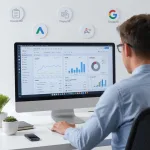Table of Contents
ToggleIntroduction
Google is much more than just a search engine; it’s a hub of innovation, creativity, and engagement. One of its most visually appealing and interactive elements is the Google Doodle, which often features unique drawings that celebrate historical events, influential personalities, and global milestones. These Google-themed drawings have become a cultural phenomenon, captivating users worldwide with their artistic creativity and hidden stories.
In this comprehensive guide, we will explore the history of Google Doodles, the artistic process behind them, popular Doodles, how you can create your own Google-style drawing, and monetization opportunities associated with Google’s creativity.
The History of Google Drawings and Doodles
Google Doodles began as a fun way to acknowledge holidays and special occasions but have since evolved into interactive and artistic masterpieces. The first Google Doodle appeared in 1998 when Google’s co-founders, Larry Page and Sergey Brin, created a simple design featuring the Burning Man Festival logo.
Since then, Google Doodles have celebrated everything from scientific breakthroughs to cultural festivities, making them an integral part of Google’s identity.
Key Milestones in Google’s Drawing History
- 1998 – First-ever Google Doodle: A tribute to Burning Man.
- 2000 – The first official Doodle was created by Dennis Hwang, celebrating Bastille Day.
- 2010 – The first interactive Doodle: A playable Pac-Man game.
- 2011 – Google introduced video Doodles (e.g., Freddie Mercury’s tribute).
- 2016 – Google launched AI-generated Doodles using deep learning.
- 2020-present – Google Doodles feature augmented reality (AR) and interactive quizzes.
The Creative Process Behind Google’s Drawings
The creation of a Google Doodle follows a structured but highly creative process. Google’s in-house illustrators, designers, and engineers, known as “Doodlers,” follow these steps:
1. Choosing a Theme
Doodles commemorate birthdays, global events, scientific discoveries, and even fictional characters. Google selects themes based on cultural relevance and user engagement.
2. Sketching and Conceptualization
The artists brainstorm and sketch multiple variations before finalizing a concept that aligns with Google’s branding.
3. Digital Rendering and Animation
Using Adobe Illustrator, Photoshop, and AI-based tools, artists refine the sketch into a polished digital illustration. If the Doodle is interactive, HTML5, JavaScript, and CSS are used to create animations.
4. User Engagement and Feedback
Google often runs beta tests or social media surveys to gauge public reactions before launching a Doodle globally.
Popular Google Drawings and Doodles
Some Doodles have gained immense popularity due to their artistic appeal, interactivity, and cultural significance.
1. Pac-Man (2010)
- The first playable Doodle, allowing users to experience the nostalgia of Pac-Man directly from the Google homepage.
2. Freddie Mercury’s Birthday (2011)
- A musical animated Doodle celebrating the Queen frontman’s 65th birthday.
3. Halloween Games (2016-2022)
- A series of spooky, interactive games that users could play directly in the Google Doodle.
4. NASA’s Mars Rover Landing (2021)
- A science-themed animated Doodle celebrating the Perseverance Rover’s successful landing.
How to Create a Google-Style Drawing
Want to design a Google-style drawing or Doodle? Follow these steps:
1. Select a Topic
Choose an event, person, or idea you want to illustrate. Use tools like Google Trends to find trending topics.
2. Sketch Your Idea
Use a digital tablet (e.g., Wacom or iPad Pro) with Adobe Fresco, Procreate, or Photoshop to sketch ideas.
3. Refine Your Illustration
Incorporate vibrant colors, smooth strokes, and playful elements to mimic Google’s style.
4. Animate (Optional)
For an interactive element, use tools like Adobe Animate or LottieFiles.
5. Publish and Share
Post your artwork on platforms like Dribbble, Behance, and social media to attract engagement.
Monetization Opportunities: How Google Drawings and Doodles Can Generate Revenue
Google’s creative illustrations and Doodles attract millions of users, making them valuable for ad revenue. Here’s how you can capitalize on high eCPM, high CPC, and high RPM:
1. AdSense Monetization
- CPC (Cost Per Click): Blogs about Google Doodles attract a high CPC due to their niche audience.
- eCPM (Effective Cost Per Mille): Optimized ad placements on Doodle-related content lead to high eCPM.
- RPM (Revenue Per Mille): Engaging, high-traffic content can maximize your earnings per 1,000 views.
2. YouTube Revenue (Doodle Tutorials)
- Create a YouTube channel featuring Doodle-making tutorials.
- Monetize via YouTube Ads, sponsorships, and memberships.
3. Selling Google-Themed Digital Art
- Design and sell Doodle-inspired illustrations on Etsy, Redbubble, and Fiverr.
4. Affiliate Marketing
- Promote graphic tablets, drawing software, and online courses using affiliate links.
5. Freelancing as a Doodle Artist
- Work as a freelance illustrator for clients who want a Google-style drawing for their branding.
SEO Optimization for High CPC and High RPM
To ensure your content ranks well and attracts high-paying ads, follow these SEO strategies:
1. Keyword Research
Use Google Keyword Planner to find high CPC keywords like:
- “Google Doodle history”
- “How to draw Google logo”
- “Google interactive Doodle”
2. Long-Form Content (2,000+ Words)
Search engines prefer in-depth, informative content, increasing RPM.
3. Use High-Quality Images and Videos
Embed engaging visuals to enhance dwell time, boosting eCPM.
4. Internal Linking
Link to related topics like graphic design tutorials and digital illustration software.
5. Fast Loading Speed
Optimize images and enable lazy loading to improve user experience.
Conclusion
The drawing of Google, particularly Google Doodles, represents an incredible fusion of art, technology, and engagement. From celebrating cultural icons to introducing interactive experiences, these drawings captivate millions globally.
If you are passionate about digital art, exploring Google-style drawings can open up multiple opportunities for monetization, freelancing, and content creation. Whether through SEO-optimized blogging, YouTube tutorials, or selling illustrations, leveraging Google’s artistic appeal can be both creatively fulfilling and financially rewarding.






